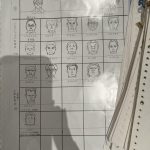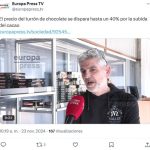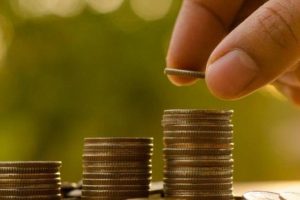First modification:
The Federal Reserve raised its benchmark interest rate by three-quarters of a point for the second time in a row, in the most aggressive effort in three decades to rein in rising prices that are choking Americans.
Put a brake on a horse that is galloping at full speed. That is what the United States Federal Reserve, the Fed, is trying to do with the economy in its new increase in interest rates. The galloping horse, rising prices, and the bridle, more expensive money to reduce demand.
Now the key rate of the Fed was in the range of 2.25% and 2.5%, affecting loans to consumers and companies, but trying to cool the economy that suffers from a chronic increase in prices, as a result of the injection of aid governments during the pandemic, supply chain problems, and one final blow: the war in Ukraine.
During the usual press conference after the issuer’s policy meeting, Fed Chairman Jerome Powell took the microphone to repeat like a mantra that his greatest commitment is to defeat inflation.
Roberto Perli, an economist at ‘Piper Sandler’, assured that the president of the Fed emphasized that “even if it causes a recession, lowering inflation is important.”

Powell said the pace of Fed hikes could slow in coming months now that its key rate is roughly at a level believed to be neither supportive nor constraining of growth. The statement sparked a sharp rally on Wall Street, with the S&P 500 stock index rising 2.6%; and strengthened the euro, which has fallen to historic levels against the dollar.
Powell: “I don’t think the United States is currently in a recession”
The official was cautious not to rule out another three-quarter point hike when Fed policymakers meet again in September. A decision that will depend on what emerges from the numerous economic reports that will be published between now and that date.
The market’s biggest fear is that the world’s largest economy will slide into recession, something Powell doesn’t see on the radar. “I don’t think the United States is currently in a recession,” he replied, attributing some success to raising interest rates in slowing the economy and possibly easing inflationary pressures.
The White House played down the idea that the US falls into recession, although it is preparing for the publication on Thursday of the Gross Domestic Product data for the second quarter of the year, which analysts expect in negative.
“We’re preparing for this the same way we prepare for any major report, thinking about how it affects families,” said Jared Bernstein, one of US President Joe Biden’s economic advisers.

Traditionally, an economy is considered to have fallen into a recession when it chains two consecutive quarters of falling GDP, something that could happen this Thursday, but Jared Bernstein, Biden’s adviser on economic affairs, argued that there are other factors such as the strength of the labor market or consumer spending, both in good standing, which should be taken into account.
“The idea of a recession is defined by economists as a broad and persistent decline in economic activity. It is not necessarily two quarters of GDP decline, especially if those declines are slight,” argued Bernstein, without showing a friendly image of the situation. .
Inflation in the United States stood at 9.1% annually in June, the highest annual rate in 41 years, and for this reason, monetary policymakers are quick to slow down the galloping horse of inflation, although many criticize They arrived a little late to put a brake on it.
With EFE and AP





![[Img #74683]](https://thelatestnews.world/wp-content/uploads/2024/12/The-main-mistakes-to-avoid-when-betting-on-electronic-sports-150x150.jpg)









Add Comment